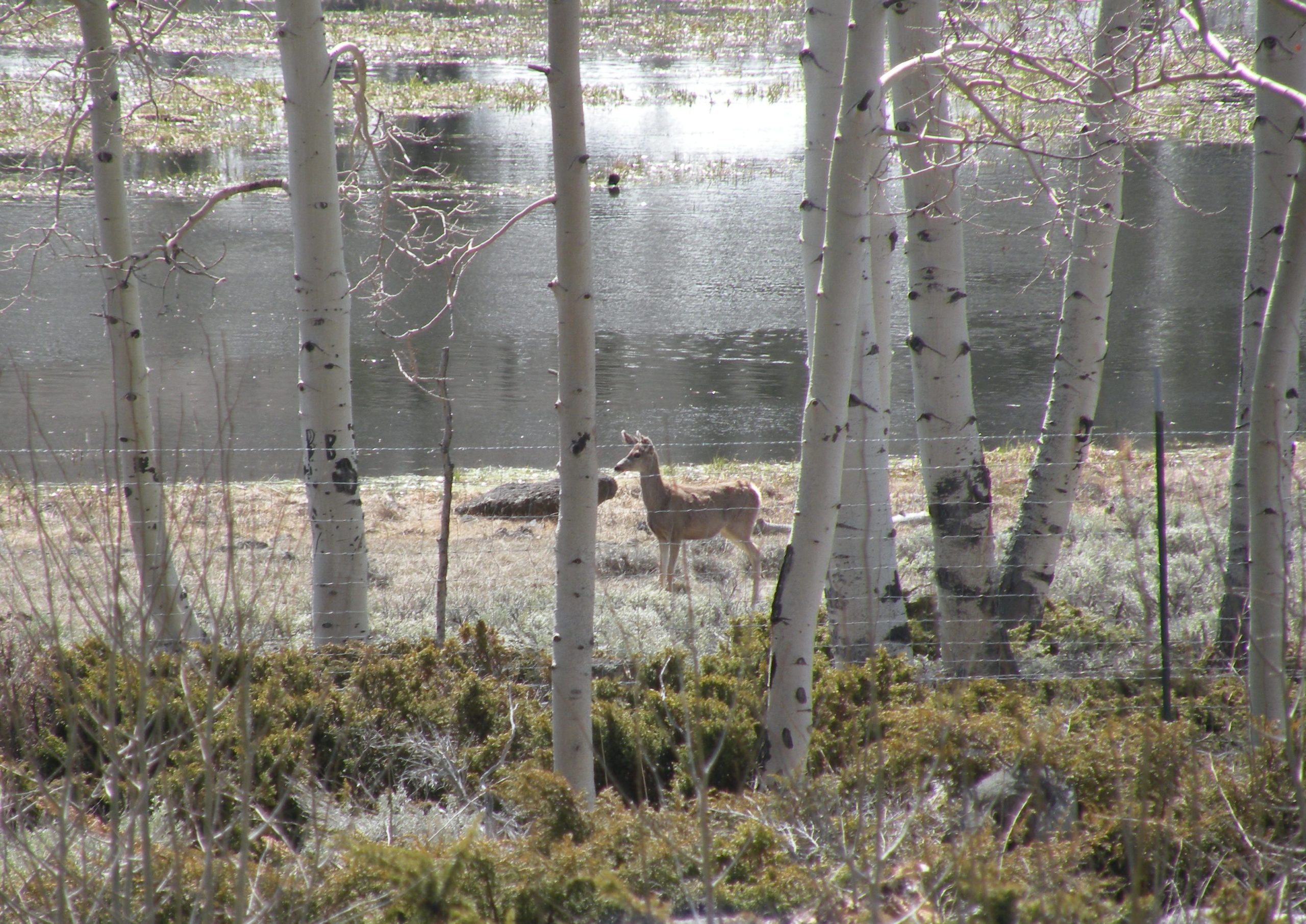Introducing the Pando Fund
Since my last post with Pando Populus, a lot has happened at the Pando aspen clone in central Utah. This giant, genetically uniform, grove of aspen 106 acres in size is rapidly dying (see previous post for synopsis). Many believe Pando is the largest living organism on the planet, and it has certainly been alive for centuries, perhaps millennia. As the chief researcher at the site, I’ve been monitoring its demise, as well as some promising signs of recovery in a small portion of the clone.
In early June, my colleague Jody Gale and I completed the third year of measures since fencing was erected and experimental treatments were implemented. With three years of data we can begin to see trends emerging. A science article summarizing this multifaceted experiment is being compiled simultaneous to this post.
In brief, there seems to be progress toward healthy growth of young aspen root suckers (sprouting stems from parent roots; asexual regeneration). This is an element that has been missing for years, but is essential to sustainable aspen forests everywhere.
While this appears to be a successful development, I have two cautions to acknowledge: 1) This experiment covers less than one-third of the entire Pando clone, and fencing the entire grove is currently cost prohibitive; 2) A larger fenced area uphill of this initial site has not been reproducing successfully (as of early June) for unknown reasons. It may simply be that animals are getting into the fenced area—we hope to find out through continued monitoring of the site.
Another development has been the creation of the Pando Fund under the auspices of the Western Aspen Alliance at Utah State University. The goal of the Fund is to institute science-based restoration at the iconic Pando Aspen Clone near Fish Lake, Utah. This mechanism establishes a small donation fund (multiple donors; requests of $500-$10,000) for monitoring, research, publication, presentation, travel, outreach, and management recommendations in cooperation with the U.S. Forest Service. All donations are tax deductible through Utah State University’s 502 (c) (3) status.
We feel that if the plight of Pando were more publicized we could apply greater pressure on legislators to direct resources toward its restoration. It is also clear that a multi-agency effort (state agriculture and wildlife agencies) are more likely to be brought to the table to constructively address this situation if there is public demand.
Finally, it is expected that on-the-ground, adaptive, monitoring will be a key part of successful recovery. The Fund will help put scientists, technicians, students, and citizens at the site to gauge progress and adjust actions when necessary.
The Pando clone, like many complex natural resource issues, is ultimately a reflection of our society—of how humans function on a fragile planet. In the 19th century we plundered the West. During the 20th century, the age of “command and control,” we attempted to extract resources using an agricultural model of “sustained yield.”
In the 21st century we have a new model that, in theory, is guided by earth’s innate processes—we feel this emulation of natural will get us closer to resilient systems. Of course, climate change complicates this all. Nonetheless, if we can restore key processes at Pando, all along monitoring and adapting if we veer off course, we feel that is our safest bet.
Author’s note: the Western Aspen Alliance is working on many projects across the West and in Canada to disseminate contemporary science and restore degraded aspen ecosystems. If you have a broader interest in our mission and/or have the means to support the WAA with a larger donation, please feel free to contact me. Ph: 435-797-0194 or email: p.rogers@usu.edu.
